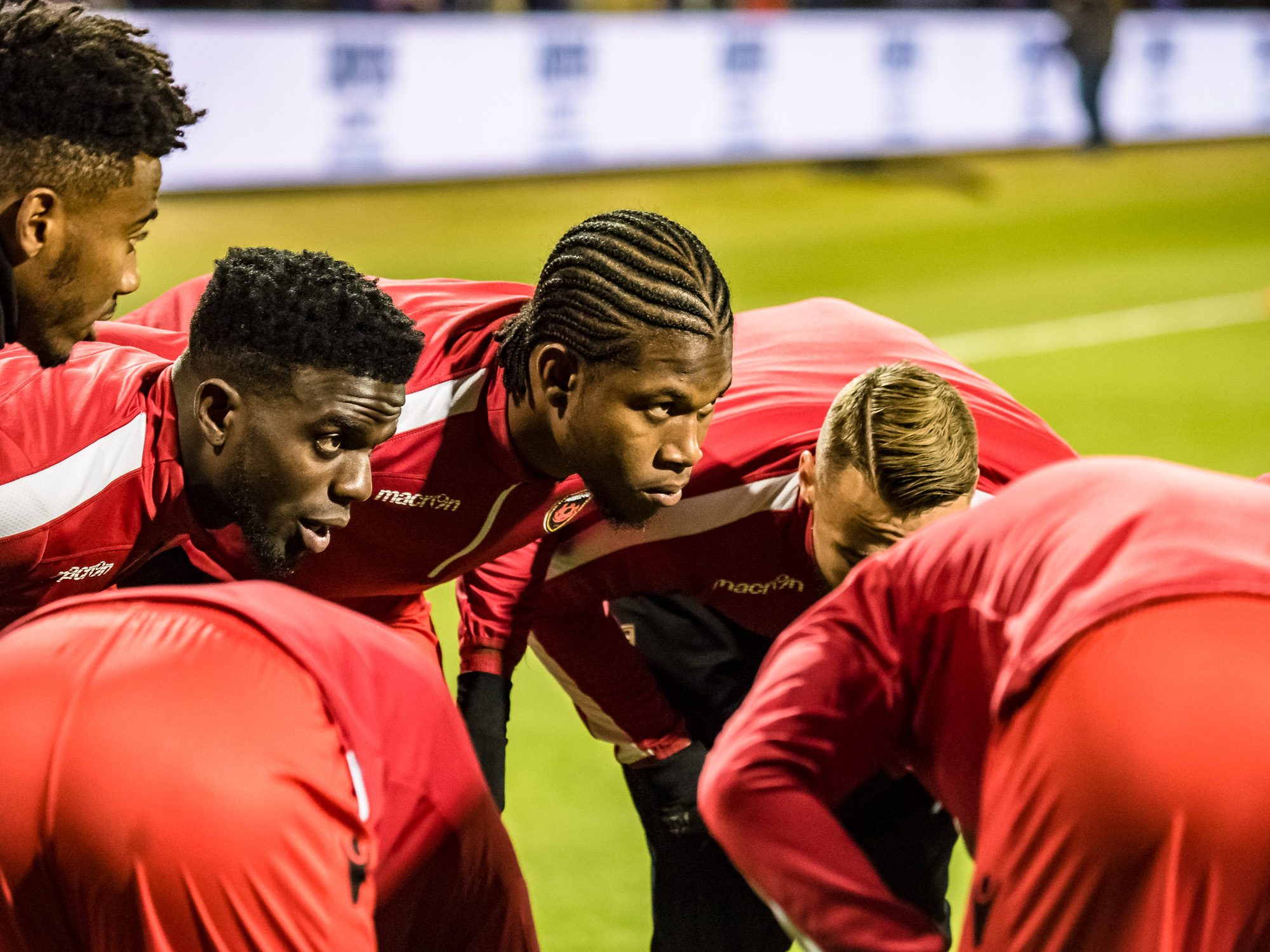Welcome back to Rising Tactics Recap, a weekly column where I attempt to provide insight to Phoenix Rising fans by breaking down some strategic and tactical observations from Phoenix’s latest match.
In this last paragraph of last week’s Rising Tactics Recap, I wrote that it was “way past time” for me to give Phoenix Rising’s defensive unit their dues. I made a last-ditch attempt to give credit to Zac Lubin and the backline for their efforts in keeping Austin Bold off the board last weekend, but I wasn’t able to properly illustrate their importance to their attacking teammates, to Rick Schantz’s system, and to their current winning streak.
Now, in the afterglow of their 1-0 win over the Tulsa Roughnecks that set a USL record for most consecutive league wins, it seems like the perfect time to applaud Phoenix’s defensive unit. Though the corner kick that led to Kevon Lambert’s game-winner was set up by a nice possession sequence, Phoenix Rising would not have been in position to take the lead in the first place if their defense hadn’t held strong.
At training on Tuesday, I asked Schantz about the adjustment in tactics from last year to this year. He mentioned that this year, he has taken “the leash off“ his players and allowed his team to attack in a more open game.
Open games put a lot of stress on a defense. Certain defenders are left isolated when Phoenix Rising pushes 8, 9, or 10 field players forward into the opposing half while in possession or when they push numbers forward quickly in transition.
Saturday’s win against Tulsa was a great example of the stress that Phoenix’s attacking style can put on their backline. Because Tulsa was largely content to concede possession and allow Phoenix to creep forward in possession before winning the ball and attacking in transition, Phoenix’s defensive unit had to be ready to stop counter attacks.
One of the main ways that Phoenix Rising defend against counter attacks is by pressing to win the ball back after they lose it. Because each member of Phoenix’s backline is athletic, they can all either step to pressure the ball or drop to act as a security blanket closer to their own goal.
In this sequence, Phoenix lose the ball in the attacking half and Tulsa start their counter attack. Before Tulsa attacker Christian Altamirano can even take a touch, left back Amadou Dia steps over to pressure and funnel Altamirano into defensive cover. Dia forces an errant pass and center back Joey Farrell clears the danger.
Dia’s mobility and comfort defending high up the field is a huge asset to Phoenix Rising’s re-pressing scheme.
When Tulsa tried to play over Phoenix’s re-press instead of through it, having Doueugui Mala in the back to stand up to their big striker was essential. On this play, Tulsa played the ball over the top to forward Janu Silva, who tried to beat Mala around the outside. Mala stayed strong and tight to Silva and forced him to play the ball backwards to a teammate. Though it’s not captured in the gif, Phoenix won the ball back seconds later and regained possession, at least partially because Mala stalled the initial attack.
When defending in more of a static defensive block, Phoenix’s backline was still difficult to breach. Farrell covered ground and frequently made last-minute tackles to keep Tulsa’s direct attacks at bay. Look at how Farrell steps in front of D. J. Dean and uses his body to disrupt his opponent’s run:
That slight bump allowed Farrell to keep up and take the ball from the opposing attacker.
In the second half, as the pressure to break Cincinnati’s record continued to rise, Phoenix’s defensive positioning became increasingly important. While the backline had one major moment of miscommunication in the 73rd minute that allowed Tulsa to break through their offside trap, Phoenix Rising played solid, fundamental defense for most of the second half.
This clip of Mustapha Dumbuya’s footwork is a good example of using positioning to beat an attacker to the ball and eliminate danger. For those of you familiar with American football, Dumbuya’s defensive footwork looks a lot like an NFL defensive back. By back-pedaling at an angle, Dumbuya can quickly turn his hips either to the left or to the right, depending on which way his man decides to run. With his head up, Dumbuya reads the central run and gets to the ball first.
When all else failed for Phoenix Rising, Zac “The Mountain“ Lubin came up big in goal. Early on in the game, Tulsa had a great chance to take the lead with a quick counter attack, but Lubin denied the shot with a well-timed kick-save.
Lubin has been the perfect insurance policy to cover for Phoenix’s aggressive – and often defensively liable – attacking style of play. He leads the USL Championship with 11 clean sheets.
With Dia and Mala anchoring the left side, Dumbuya and Farrell stopping attacks on the right, and Lubin cleaning up the rest, it’s hard for anyone to score on Phoenix Rising right now. Those five players have truly gelled into a cohesive defensive unit.
The Final Third:
- As the season has gone on, Phoenix hasn’t just gotten better defensively: they’ve also gotten smarter. In the second game of the season, a home match against New Mexico United, Phoenix Rising let Santi Moar dribble untouched for more than 40 yards on his way to goal. On Saturday against Tulsa, Phoenix showed that they were willing to use tactical fouls to stop counter attacks. José Aguinaga’s yellow card in the 44th minute stopped a potentially dangerous Tulsa attack from developing. It’s not the prettiest tactic but it’s a necessary one for teams who spend a lot of time in possession.
- The central midfield competition is real. Kevon Lambert came off the bench in the second half and not only scored the eventual game-winner but looked very active defensively. I’m not sure who Lambert would overtake in the pecking order, but this week could be the week that we see Rick Schantz rotate his midfield three.
- There’s nothing tactical or strategic about this last point, but it certainly warrants mentioning: Phoenix Rising made history this weekend.
Thanks for reading this week’s edition of Rising Tactics Recap! Check back next week for more insight and analysis.




